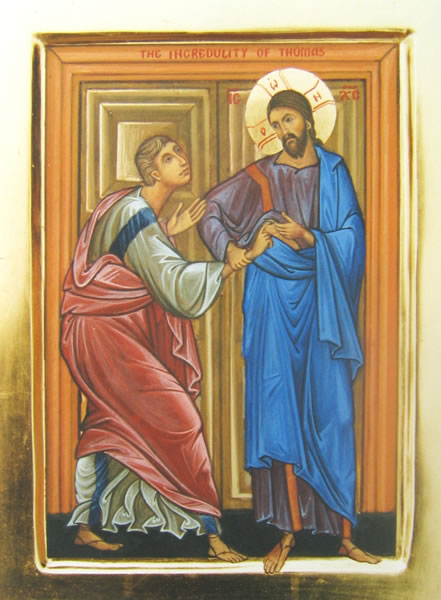Mount Calvary Church
A Roman Catholic Parish
The Personal Ordinariate of S. Peter
Eutaw Street and Madison Avenue
Baltimore, Maryland
Rev. Albert Scharbach, Pastor
Andrew Johnson, Organist and Music Director
Easter II
April 11, 2021
8:00 A.M. Said Mass
10:00 A.M. Sung Mass
This mass will be livestreamed
_____________
Hymns
Firmly I believe and truly (NASHOTAH) is adapted from John Henry Newman’s 1865 poem The Dream of Gerontius about the progress of a soul from death to salvation. As an Evangelical, Newman (1801—1890) rejected the doctrines of purgatory and the intercession of saints, but as part of his conversion (1845), he came to a realization of the fullness of the communion of saints: those striving on earth, those being purified by the divine fire, and those in heaven moved by love to pray for those on earth and in purgatory. The poem (Greek Geron: old man), relates the journey of a pious man’s soul from his deathbed to his judgment before God and settling into Purgatory. As the priests and assistants pray the prayers for the dying, Gerontius recites this creed and prays for mercy. Sanctus Fortis, Sanctus Deus is from the Good Friday liturgy and is alluded to in the line “him the holy, him the strong.”
O sons and daughters (FILII ET FILIAE) is a translation by John Mason Neale (1818-1866) of the hymn O filii et filiae by the Franciscan Jean Tisserand (died 1494). It recounts the appearance of the Risen Christ to both the women on Easter and to the disciples in the upper room. We are addressed in the stanza How blest are they who have not seen / And yet whose faith has constant been, / For they eternal life shall win. Although we have not seen the Risen Lord with our bodily eyes, we see Him with the eyes of faith, especially in the Eucharist, and are loyal to Him.
